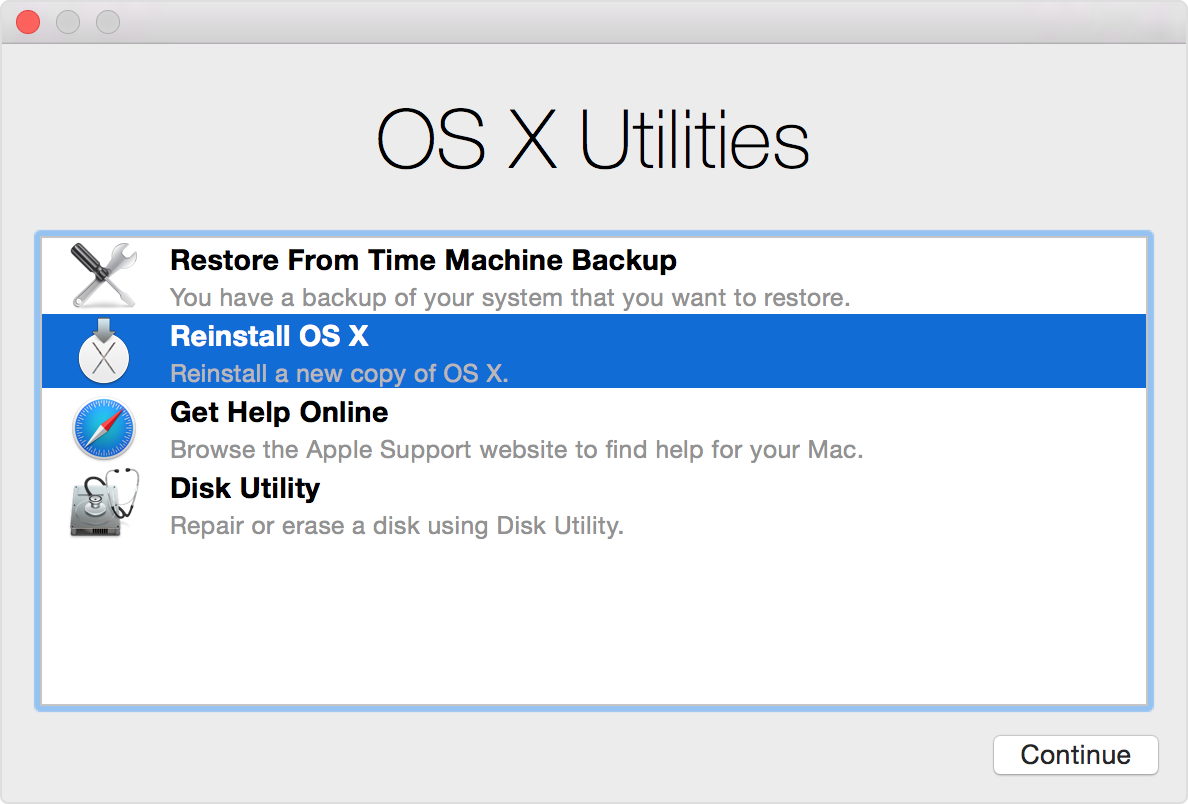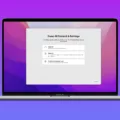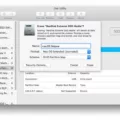If you have ever experienced a problem with your Mac, chances are you have had to use Mac OS X Utilities. This is a powerful set of tools that can help you troubleshoot and repair your Mac, as well as perform a variety of other tasks. In this blog post, we’ll explain what Mac OS X Utilities is, how it works, and how to get out of it when you’re done.
Mac OS X Utilities is a collection of troubleshooting and repair tools that come pre-installed on every Mac. It is meant to help users fix their computers when they experience problems or malfunctions. It includes features like Disk Utility, which can be used to repair disk permissions and verify the integrity of your hard drive; Terminal, which lets you run command-line programs; and Network Utility, which helps diagnose network issues.
To access Mac OS X Utilities, first turn off your Mac and then press the power button while holding down the Command + R keys simultaneously. This will boot your computer into the recovery partition, where the Utilities app will appear on screen. From here you can select any of its tools to help diagnose or repair your computer’s issue.
When you are done using the utilities app, there are two ways to exit out of it: restarting the Mac or reinstalling macOS. To restart the Mac from within the app itself, open up the Apple menu in the corner of your screen and choose “Restart” from there. Alternatively, you can press and hold down the Power button util “Loading startup options” appears onscreen—then follow the instructions from there until your computer restarts normally again.
If instead you want to reinstall macOS from within Mac OS X Utilities instead of restarting your computer directly, open up Recovery Mode by pressing Command + R while turning on your computer again—just like when accessing utilities in the first place. Then in Recovery Mode select “Reinstall for Your macOS Release” followed by “Continue”—and follow all onscreen instructions until macOS has been successfully reinstalled aain onto your machine.
We hope this blog post has helped explain what Mac OS X Utilities is and how to get out of it when needed! With these steps at hand now we hope that any future technical difficulties won’t be too daunting for any user!

Exiting Utility Mode on a Mac
To exit out of utility mode on your Mac, you’ll need to restart the device. To do so, you can either go to the ? Apple menu and choose “Restart,” or press and hold down the Power button until the Mac turns off and then back on again. After a successful restart, your Mac will have exited out of utility mode.
Restoring a Mac From OS X Utilities
In order to restore your Mac from OS X Utilities, you must first shut down your Mac. To do this, go to the Apple menu and select Shut Down. Once your Mac is shut down, press and hold the power button until “Loading startup options” appears. Select Options, then click Continue.
You will then be taken to the Recovery app window. In this window, select Reinstall for your macOS release and click Continue. You will then be prompted with instructions on how to proceed with reinstalling your Mac’s operating system. Follow these instructions carefully in order to successfully reinstall OS X Utilities on your Mac.
Forcing Disk Utility to Quit on Mac
To force quit Disk Utility on Mac, you can press the Option (or Alt), Command, and Esc (Escape) keys at the same time. This will bring up a Force Quit Applications window, whee you can select Disk Utility and click “Force Quit”. Alternatively, you can open the Apple menu ? in the corner of your screen and select Force Quit from there to bring up the same window.
What is OS X Utilities?
OS X Utilities is a special screen that appears when you boot up your Mac computer. It allows you to access various system tools and utilities that can be used for troubleshooting, recovering lost data, resetting user accounts, and more. This screen is sometimes referred to as the recovery partition and provides access to several important features that may be needed in the event of problems with the operating system or other software.
Resetting a Mac to Its Default Settings
To get your Mac back to normal, you’ll need to reinstall macOS. To do so, power down your Mac if it’s on and press and hold the power button until you see the startup options. Select macOS Recovery, then select Reinstall macOS. Follow the prompts until you’re asked to select a disk for installation. Choose the disk which contains your operating system and follow the on-screen instructions to complete the process. After reinstalling macOS, make sure to install any software updates that are available to ensure that your Mac is running optimally.
Starting a Mac in Normal Mode
To start your Mac in normal mode, make sure it is powered off and then press the power button. Once you hear the startup sound or see the Apple logo on your screen, release the power button and wait for your computer to finish starting up. When you get to the login screen, enter your username and password to log in and you sould be back on your desktop in normal mode.
The Purpose of MacOS Utilities Pop Up
MacOS Utilities is a set of tools that allow you to perform certain tasks related to your Mac’s system, such as restoring from a Time Machine backup, reinstalling macOS, and more. It may have popped up because the Mac has detected an issue with the system or its startup disk, or it may be due to a corrupted or missing system file. In any case, it’s important to take the time to find out what caused the issue so that it can be resolved.
Restoring a Disk Using Disk Utility on Mac
When you restore a volume using Disk Utility in Mac, the selected source volume will be used to overwrite the destination volume. This means that all of the data on the destination volume—including any files, folders, or settings—will be completely erased and replaced with the contents of the source volume. Before starting a restore process, it is important to make sure that any files or oher data you want to keep are backed up on a different volume. Once the restore process is complete, all of the data from the original source volume will be restored onto the destination volume.
Does Mac Disk Utility Completely Erase Data?
Yes, Mac Disk Utility does erase everything from a storage device. It’s important to note that erasing a storage device completely deletes all data stored on it, so if you want to save any of the files currently stored on the device, you should copy them to another storage device beore proceeding with the erase operation.

Source: apple.com
Cancelling a Mac Disk Utility 7 Pass Erase Midway Through the Process
Yes, you can cancel a Mac Disk Utility 7 pass erase mid way through its process without damaging your hard drive. Cancelling an erase process does not damage the hard drive itself, but it is important to note that any data erased up to the point of cancellation will be permanently lost. It is also possible to damage the data on the drive, so it is important to be careful when using disk-related programs.
Troubleshooting Mac’s Unwillingness to Quit Finder
Your Mac won’t let you quit Finder for security reasons. It is important to keep Finder running so that the user can always access the contents of their Mac hard drive. Quitting Finder would make it difficult to access stored files and data when needed. If you need to close it anyway, you can force quit it from the Apple menu.
Utilities Menu on Mac
The Utilities menu on Mac is a folder that contains a variety of handy tools and applications to help you manage your computer. It includes the Activity Monitor, whch allows you to keep track of the CPU, memory, energy, disk and network usage of every application or process running on your Mac; Disk Utility, which lets you check and repair disks; Terminal, which provides command-line access to the Mac operating system; Console, a log viewer for tracking system events; and System Information, which provides detailed information about your Mac. Additionally, many third-party developers provide apps in this folder such as Adobe’s Creative Cloud app. With these utilities at your disposal, you can more easily troubleshoot any issues with your Mac.
Conclusion
In conclusion, Mac OS X Utilities is a powerful tool that can be used for troubleshooting, diagnostics, and even installation of the macOS operating system. It enables users to access advanced features and restore their Mac to its factory settings or reinstall the latest version of macOS. The four distinct options available in Mac OS X Utilities include Recovery Mode, Reinstall macOS, Get Help Online, and Disk Utility. All of tese features allow users to take control of their Mac and resolve any issues they might be facing. With its easy-to-use interface, Mac OS X Utilities is an essential tool for anyone working with a Mac.








